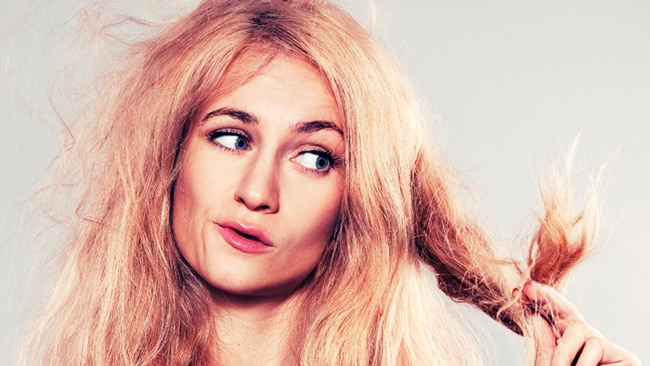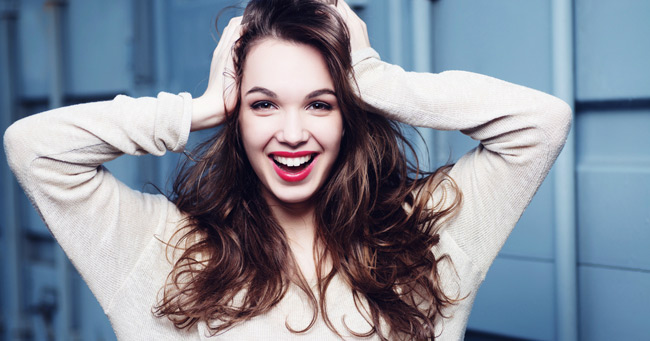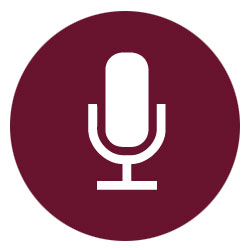How Hair Ages

Think back to your childhood. Now focus on your preadolescent hair, It was probably more vibrant, shinier, fuller, and either lighter or brighter in color than your natural hair is now. There are a few reasons for this.
During childhood, we have more hair in the growth stage than at any other time,
giving us plenty of volume. At this time in your life, the sebaceous glands are
working at the peak of their efficiency, which gives strands a high gloss. Hair
pigment hasn't started to darken, so your hair color is vibrant, and you
probably aren't yet messing around with hair-changing chemical processes, or
using heat appliances- all of which can rough up strands' cuticles or strip them
away entirely, leaving hair dull and brittle.
Teens and 20s
During your young adult years, hair slowly begins changing from its childhood state. Strands may become coarser, growth may slow.
Just a bit, color grows progressively darker, and the sebaceous activity for
most of us goes on overdrive, pumping out oil at a furious rate. The teens and
early 20s are a time for experimentation- and rightly so: how else are you going
to find out what works for you and what doesn't? Most of you have strong.
Slightly oily and can afford to rough it up a bit with the latest color or
texture trends. In beauty, as in life, there are no absolutes, and if your
happen to be born with fragile hair or sensitive hair, take it easy.

By the time you've reached your 30s, your hair has reached a plateau- the sebum is being produced at a more manageable pace and you have settled into your looks and accepted your hair type. Your strands have reached their darkest shade and the biggest surprise awaiting you is probably the appearance of grey.
Blondes, redheads, and light brunettes are more likely to go grey, while deep
brunettes have a better chance of going white.
YOUR HAIR AND THE CHANGE
You probably know menopause is that time when your ovaries stop producing oestrogen. Menopause can occur at any time during your adult years, but most commonly happens during your late 40s to mid-50s. Yet regardless of when it happens, menopause signals the end of your reproductive years, meaning no more to this, including not having to worry about birth control and never suffering from menstrual cramps again. Menopause is not, however, so fabulous for your hair. That's because oestrogen protects you against hair loss; without oestrogen, your locks may grow noticeably thinner. For those of you, who aren't near menopause, ask you mothers, aunts, grandmothers, or post-menopausal friends about how their mane altered after "the change"; most will admit their hair has not only frown a little (or a lot) thinner, but also finer in texture.
More bad news. For those of you genetically predisposed toward female-pattern
hair loss, menopause is when you'll learn whether or not you're going to be
affected-this also has to do with the sudden lack of hair-helping oestrogen.
Some women find hormone replacement therapy protects them near- totally or
partially from all kinds of post-menopausal
hair loss. However,
hormone
replacement therapy has been linked with
breast, endometrial, and liver cancers;
discuss the risks with your doctor.

Your 60s and beyond
By now you may be sporting quite a head of grey-or even white- hair, Sebum
production has slowed considerably and your hair may grow drier and less in need
of shampooing (and more in need of
conditioning). Most humans experience
thinning hair with age. By thinning, I don't mean obvious
balding- although if
you are prone to that, now's the time it will start happening. I simply mean
that you will have less hair than you did in your youth. That's because as we
age, our hair spends less time in anagen, or growth, stage, and more time in the
catagen (transition) and the telogen (resting) stages. At this point, there
should be no great hair surprises for you. Instead, with each decade expect a
gradual decrease in sebum production and a gradual increase in greying and
thinning.

